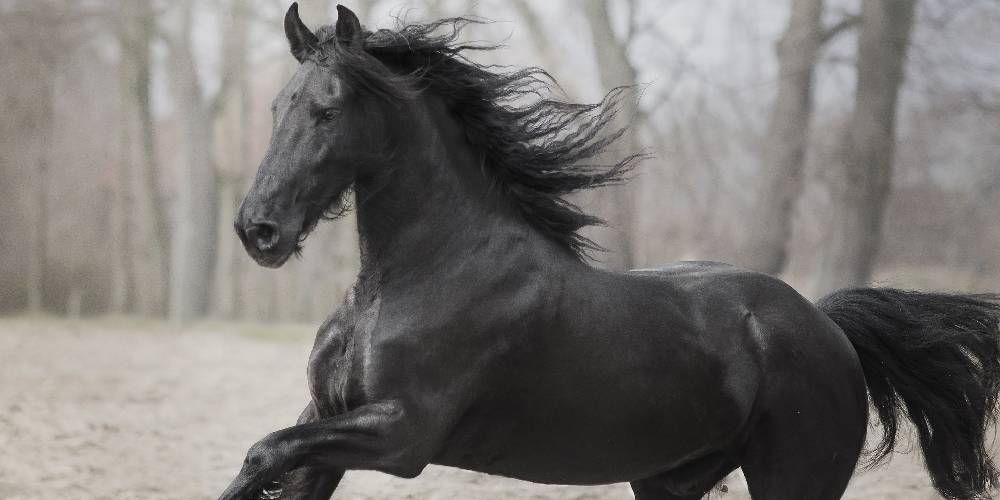This black beauty is a popular sight in dressage classes, stallion halter classes, and in breeding facilities. Did you know that this breed was actually originally meant as a carriage horse? This light draft horse is now more popularly used as a riding horse, and is seen all throughout the world.
What Is A Friesian?
A Friesian is a type of light draft horse that originated in the Netherlands. This breed comes only in black and is known for its majestic appearance and long mane and tail. This breed is a popular riding horse, particularly in dressage, but it was originally bred for pulling carriages.
What Color Are Friesian Horses?
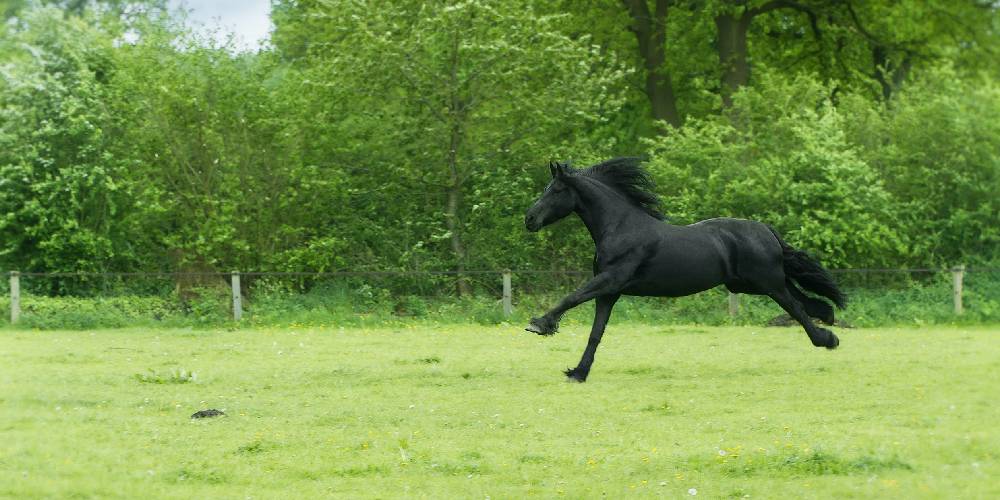
This breed of horse is only seen in black. If a Friesian is any other color it is rarely considered a purebred horse. The reason for this is because selective breeding of pure black horses of this breed was done as that was the most desired color. Now, most Friesians are homozygous for black and cannot reproduce to create any other color. These horses can be a very dark bay or very dark brown, but this is very rare. Black is the primary color seen in this breed.
The History of The Friesian Horse

Friesian horses first appeared in a portion of the Netherlands known as the Friesland. These horses were bred to be used as farm horses, carriage horses, and riding horses. In the Middle Ages, these horses were actually used to carry knights because they had the build of a light draft horse making them a strong enough and ideal mount for a knight in full armor.
This breed is descended partially from the Forest Horse. Friesians were actually used by the Romans as riding horse, and it was the Romans who brought the Friesian horse to England where it bred and influenced the Shire, Dale, Fell, and Clydesdale coldblooded draft horses.
During the crusades, this breed was actually very popularly used as war horses. After the wars when heavier draft horses weren’t really needed as much and lighter horses were preferred, this breed went nearly extinct to the point where there were only two left of its kind. The two left were, thankfully, male and female, and they were bred to conserve the breed and try to bring it back. This old version of the Friesian was much heavier than the one we know today. The heavy version of the Friesian was then bred with the Andalusian to make it lighter and a more ideal riding horse.
This breed, now lighter and faster, was used for carriage pulling, farm work, and trotting and was actually the founding breed for the Orlov Trotter. Though trotting was a popular sport, people didn’t want the breed to be a light breed so they pushed for the older version of the breed similar to the modern one we know today.
What Disciplines do Friesians Excel in?
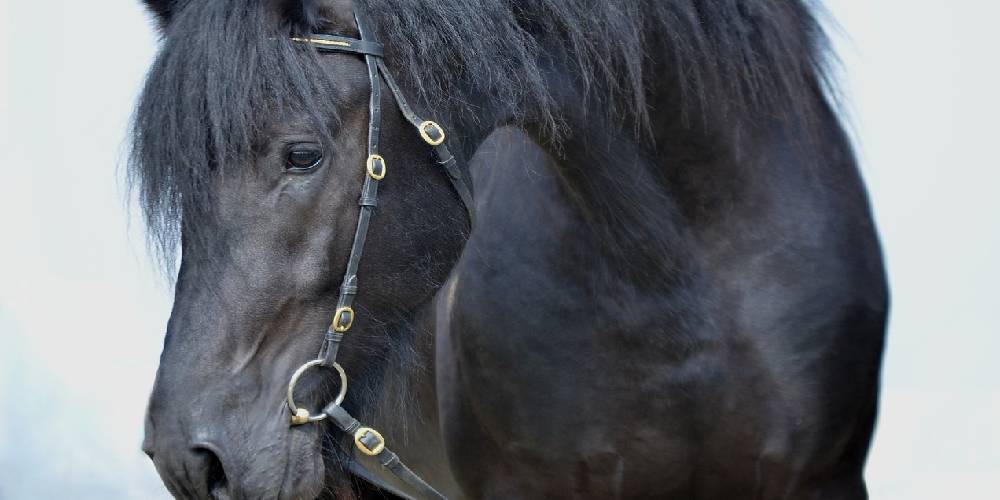
Dressage
This breed is an excellent and very popular choice to compete in dressage. They are a prime option because of their arched neck, powerful stride, agility, excellent conformation, and willingness to please. This breed is known for being a show-stopper in the dressage arena and always puts on a show.
Halter
There are many halter stallion Friesian classes where Friesian stallions are walked, trotted, and cantered by a handler who leads them around the ring. These horses make a great halter horse because of their smooth flowing movement and their majestic appearance.
Carriage Pulling
Friesians were bred to pull carriages, so it is not an uncommon sight to see a Friesian pulling a buggy. Friesians are strong stable horses and can pull a carriage without a problem whether they are pulling as a team or on their own.
Pleasure Riding
Friesians are now more popularly used as riding horses than as carriage or farm horses. This horse makes a great riding horse because of its smooth gait and responsiveness to its rider.
How to Identify the Friesian
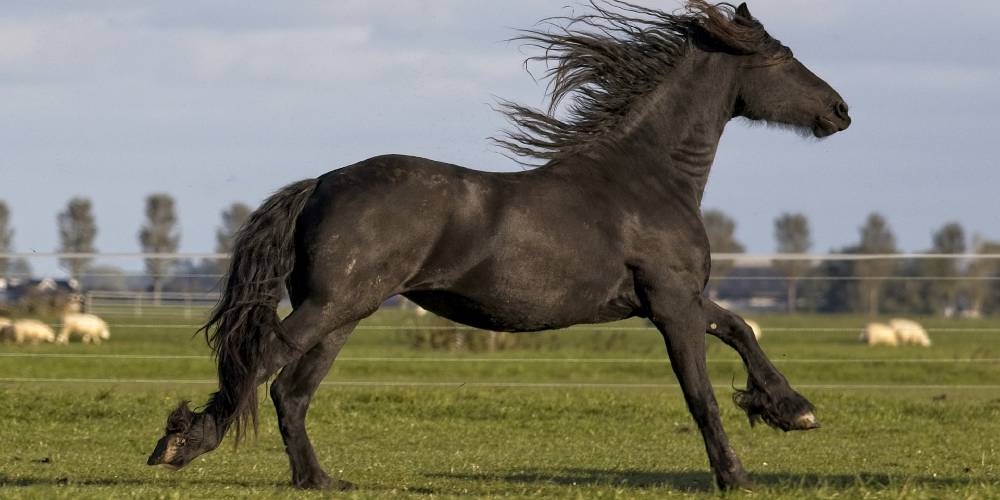
Size
The Friesian horse only stands at 15 to 16 hands high making it average for most horses and small for a draft breed. This horse also only weighs around 1,200-1,400 pounds. Looking at these proportions shows that this breed is small for the type of horse it is.
Feathers
Like most draft breeds, Friesians have feathers on their feet. No, they don’t actually grow feathers like a bird, but they grow long hair on their fetlocks and lower legs. This trait is seen in nearly all draft breeds, but black feathering is common on Friesians.
Friesians don’t have as thick of feathering on their legs as their other cold-blooded cousins. This is thought to be because of their genetics and how much of their build, size, and appearance is tied back to warmblooded horses who don’t have feathers at all.
Color
As I mentioned before, Friesians are really only found in black and really dark colors, so if you come across a smaller black draft, it most likely is a Friesian or a Friesian cross.
Neck
Friesian horses have an elegant arched neck that gives them a majestic appearance. This draft breed is very recognizable by its conformation and the shape of its neck is part of its build that makes it so recognizable.
This horse has a shorter neck than most breeds that starts thick at the base, and gets narrower at the top near the bottom of the head. The neck is neatly curved and the head is often tucked close to it arching the neck further
Discipline
I mentioned the disciplines that this breed is most commonly seen in, the most common today being dressage. Many times this breed can be identified by its appearance and its job.
Gait
This horse, when moving, appears to float across the ground. It has high front action and often has a naturally extended gait. Friesians are smooth horses which is one of many reasons that it is used as a riding horse.
This breed can do the four main gaits found in any breed: walk, trot, canter, and gallop.
Their Mane And Tail
FAQs On Friesian Horses

Are Friesian horses expensive? If they are, why are they?
Yes, a purebred Friesian, especially one with great conformation, blood lines, and training, is a very expensive horse.
There are a few reasons for why they are so expensive. One reason is that they are considered endangered. Friesians are a rare breed that has only begun to make a comeback in the last 100 years after nearly going exgtince several times over.
Another reason is that they have so much potential in many disciplines. This breed is desired for its smooth high action gaits and gorgeous movement so not only are they hard to come by, they are also hard to buy because so many people want them.
What is the average lifespan of this breed?
This breed, sadly, is not known to have a very long life and really will only make it to around 20 years of age. The average lifespan of a Friesian is only around 16 years of age.
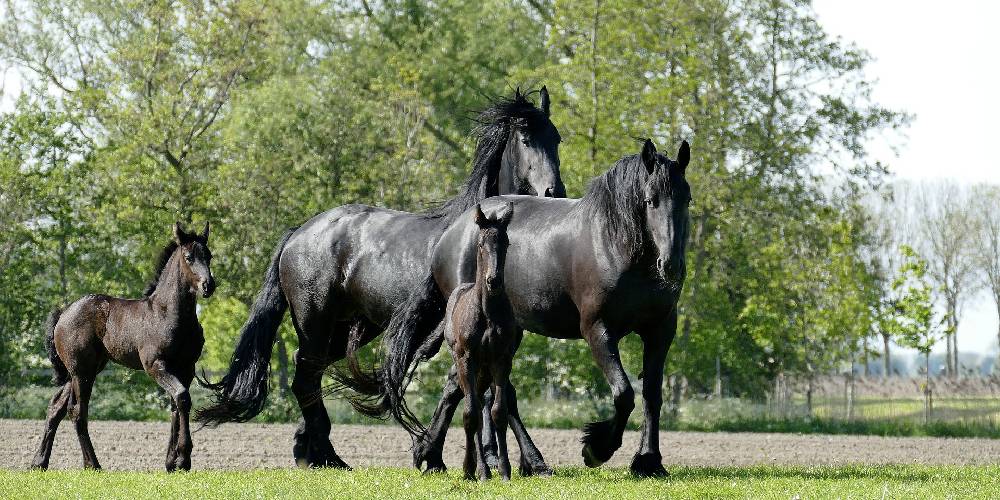
Are Friesians warmblooded or coldblooded?
This is actually a really good question that even I get confused on. Some people refer to the Friesian as the only warmblooded draft horse, but are they actually warmblooded? Or are they just heavily influenced by the warmblood?
Because of this breed’s stocky build and feathered feet, I would consider this breed to be a coldblooded horse, though I understand why one might classify the Friesian as a warm-blood.

